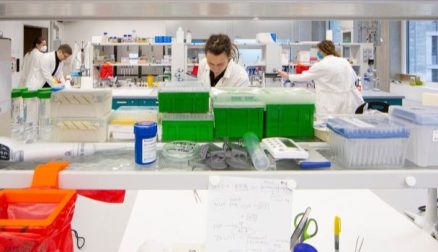
The cytoskeleton of tardigrades – the key to their extreme resilience
At the Center for Nanomaterials and Biotechnology at the Faculty of Science, UJEP, we also conduct research on the cytoskeleton of tardigrades – tiny invertebrates that can survive conditions that are lethal to most living organisms.
Tardigrades can withstand radiation, dehydration, freezing, osmotic stress, and even a short stay in open space. Their secret lies in cryptobiosis – a state in which they lose up to 97% of their water, retract into a protective shape, and practically stop their metabolism. As soon as conditions improve, they come back to life.
Our goal is to uncover the role played in this process by the cytoskeleton – a fundamental component of every cell, responsible for its shape, stability, and movement.
Thanks to an international grant from LA GAČR, we have already mapped the tubulin genes of tardigrades and described their function. We are currently monitoring how the cytoskeleton changes during cryptobiosis, using a combination of modern methods:
bioinformatics
molecular biology techniques (cloning, qPCR, Western blot)
RNA/DNA sequencing and proteomic analyses
fluorescence and electron microscopy, including expansion microscopy
advanced imaging methods (STEM, FIB-SEM 3D tomography)
sample preparation by high-pressure freezing and freeze substitution methods
Our laboratories offer modern facilities and a collaborative team of experts.
🎥 Watch the video and discover how we explore the fascinating world of tardigrades and their extraordinary abilities.